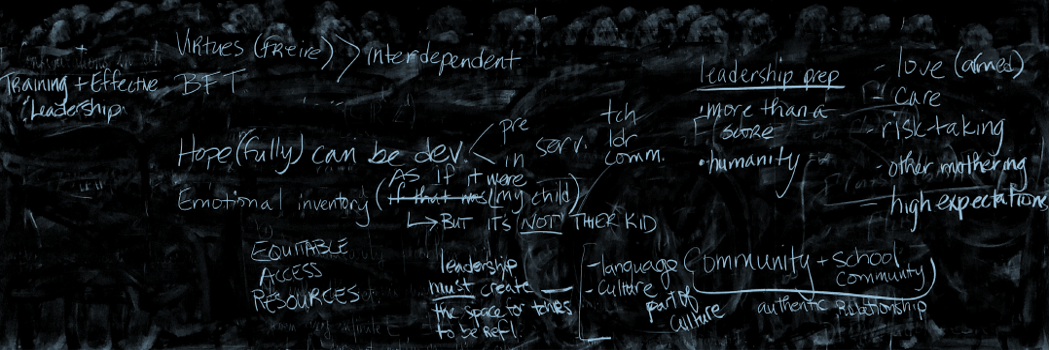Bout’ Time we Lookin’ At You!
What I appreciate about these works is the shift of the focus. Usually, cultural responsiveness (Ladson-Billings, 1995; Gay, 1994, 2000) refers to teachers and their pedagogical approaches to better support and serve students that the educational industrial complex marginalizes. However, these works, for the most part, take the focus off of the educators and places the focus on school leaders, primarily principals. The shift is an important one because principals, as well as college presidents, are often the ones who possess the political capital needed to gain access to needed resources. Moreover, the principals are the ones who are most connected to the student bodies and school communities they serve through interactions with students, teachers, and parents, as long as the principal in question is embracing an ethno-humanist identity role (Lomotey, 1993). This shift is important because now the focus is on actors with more power to change structural practices and policies. Educators are rarely supported when reaching out to Boards of Trustees or Political leaders (unless as members of a large union near election) in asking for educational resources, whether they be economic, technological, social, communal, or ability related. However, principles, and presidents, have more ability to gain access to resources when asking BOTs and politicians.
But how can BOTs ensure effective leaders are being put in place, and how can we ensure that BOTs have enough racial literacy to make effective leadership choices that disrupt instead of perpetuate the so-called academic and racial gaps (Khalifa et. al., 2016) that Ladson-Billings (2006) reframes as structural equity gaps. Tillman (2004) highlights this problem when detailing how Black principal positions dwindled after the 1954 Brown V Board of Ed decision. Sadly, as many of us already know, I don’t believe these structures want to change. They make claims of anti-racism and social justice, but these are individual actions (Trepagnier, 2006; Horsford et. al., 2011); they can not be a collective school actions unless there are individuals throughout the structure, particularly at the top, that live anti-racist lives.




I was on a panel last week with Suny New Paltz focused on Black Lives Matter in Teacher Education and one of the number one obstacles that both parents and teachers uplifting in implementing anti-racist pedagogy and practices was lack of support from school administrators. This lack of support came in many forms including complete dismissal/blocking of suggestions, allowing the teacher to “do what they want” i their own class, but not encouraging or facilitating school-wide shifts and implementation, taking punitive measures against them or refusing to take action when harassed or attacked by other colleagues or parents. The BLM at School NYC Steering Committee also had to call an emergency meeting with the superintendent of a district with school leadership that has both been blatantly racist and bigoted, but also allowed for the harassments of parents and teachers pushing for inclusive, anti-racist, and culturally-sustaining practices. I think both of these examples illustrate a couple of points that you raised. First, it’s not enough for this work to just happen at the individual teacher, classroom or parent level. It takes coalition-building as well as partnership with school leaders for school and community-wide change. Second, the work becomes all the more difficult when school leaders are the ones not able or willing to make the necessary changes.